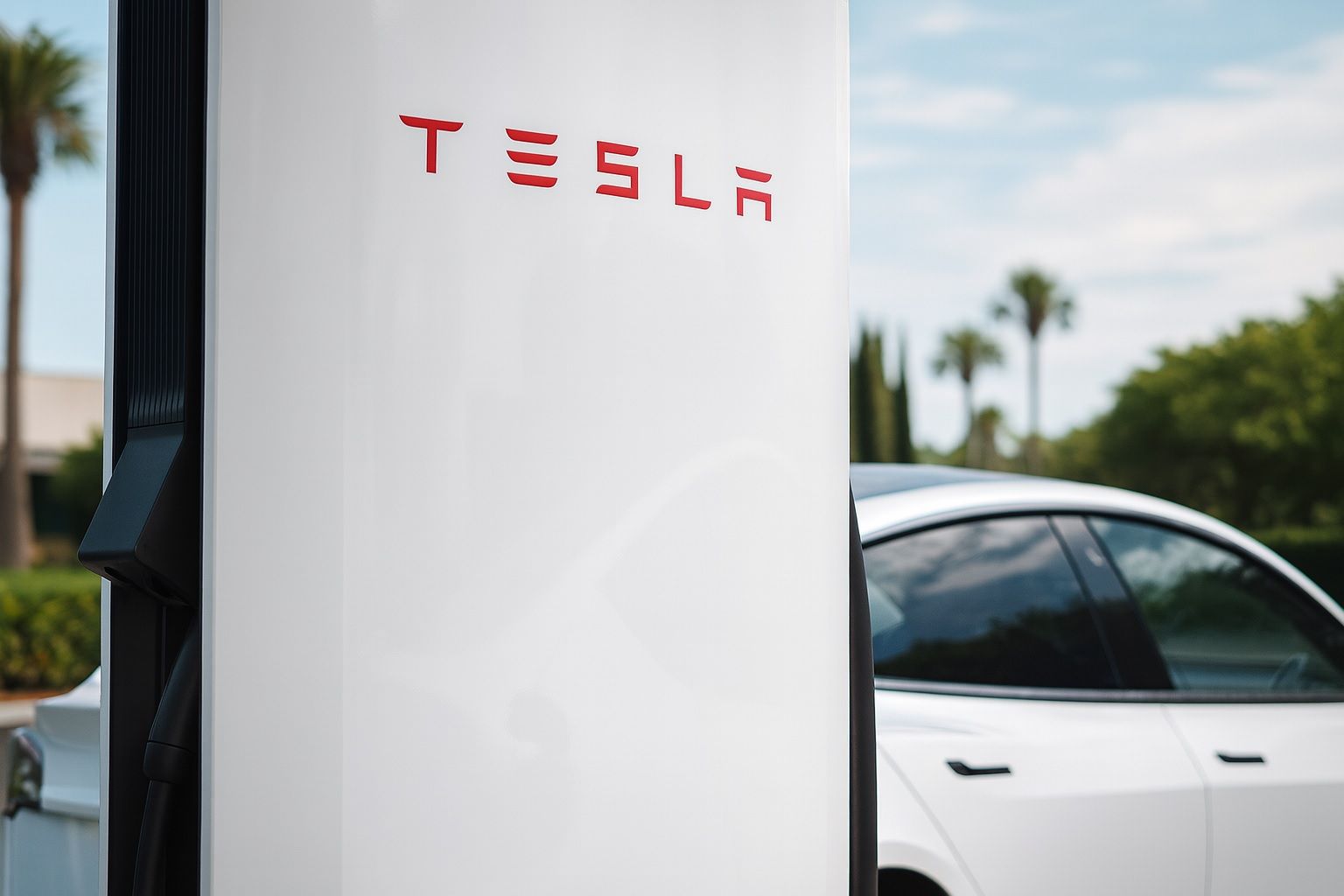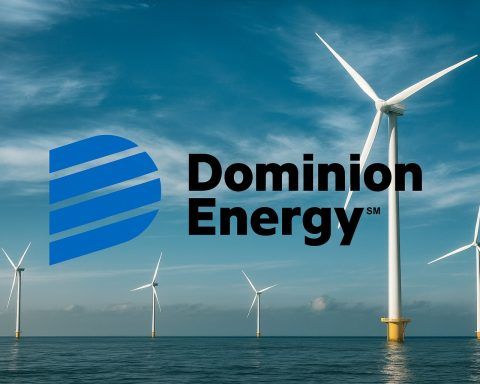- TSLA stock hovers around $433 after volatile swings post-earnings, near its 52-week highs and about 80% above year-ago levels (roughly +10% year-to-date) [1] [2]. Early October saw shares spike to ~$453 on record sales news before pulling back on profit concerns.
- Q3 deliveries smashed records at 497,099 vehicles (+7.4% YoY), far above forecasts [3], fueling record revenue of $28.1 billion [4]. Yet earnings missed estimates as steep price cuts and higher costs crimped margins – adjusted EPS $0.50 vs $0.54 expected [5], with profit down ~37% from a year ago [6].
- Key news jolted Tesla in recent days: the debut of “Standard Range” Model 3 and Y trims (about $37k–$40k) aimed at affordability, Elon Musk’s bold self-driving “Robotaxi” push (he’s “100% confident” in unsupervised FSD) [7], and a looming $1 trillion CEO pay plan requiring a staggering $8.5 trillion market cap [8]. Meanwhile, regulators opened a new probe into Autopilot safety over reports of Teslas running red lights [9].
- Analysts and investors are sharply divided. Bulls tout Tesla’s record growth and AI/autonomy “game-changer” potential – Wedbush’s Dan Ives even pegs a $600 target, calling Tesla’s self-driving a “$1 trillion opportunity” [10]. Skeptics cite fading EV credits, rising competition and Tesla’s lofty 250× P/E valuation [11] – some have Sell ratings with targets near $300 [12], warning the stock is priced for perfection.
- Outlook: short-term caution, long-term ambition. With the loss of U.S. EV tax credits, experts expect a demand dip in Q4 [13] and Tesla itself warns of “a few rough quarters” ahead now that subsidies are gone [14]. Yet the company is ramping capacity and innovation for the future – doubling down on energy storage, new models and full self-driving – striving to stay ahead of rivals from Detroit to China even as profit pressures test its momentum.
Stock Rollercoaster Near Highs
Tesla’s stock has been on a rollercoaster in October, oscillating with each new headline. Shares hit an intraday 52-week peak of about $453 on October 6 after blowout sales news, adding over $70 billion to Tesla’s market cap in one day [15]. But the euphoria was short-lived. Following the next week’s product announcements, TSLA slipped back to the low $430s [16]. As of October 27, the stock trades around $433, roughly where it began the month, and not far below its all-time highs [17]. Despite recent choppiness, Tesla has vastly outperformed the market over the past year – up about 80% from a year ago, versus ~17% for the S&P 500 [18]. (On a calendar year basis, Tesla’s gain is a more modest ~10–12%, as much of its surge came in late 2024.)
Such volatility is typical for TSLA, with 4–5% daily swings not uncommon [19]. In mid-October, for instance, the stock jumped ~5% in one session amid a tech rally, then fell 4% the next week on profit worries [20] [21]. Macro factors have added to the whiplash: hopes of Fed rate cuts have buoyed high-growth stocks like Tesla, but trade tensions or political headlines (including Elon Musk’s own controversial forays into politics) can quickly sour sentiment [22] [23]. Notably, when news broke in early October that U.S. regulators opened a new investigation into Tesla’s Full Self-Driving software over possible failures to stop for red lights, the stock slid ~2% intraday [24] – a reminder that Autopilot safety issues or Musk’s antics remain wild cards for investors [25].
From a technical analysis standpoint, chart watchers are eyeing a pennant pattern that formed during Tesla’s recent consolidation [26]. The post-earnings drop threatens to break below this bullish pennant, signaling waning momentum and a potential near-term pullback [27]. Key support levels sit around $360 (a region that attracted buyers during the summer rally), with deeper support in the high-$200s if a sell-off deepens [28] [29]. On the upside, any Tesla rebound could meet resistance around $465–$489, a zone near the stock’s record high where traders may take profits [30]. In short, TSLA’s chart is at a crossroads, reflecting a tug-of-war between bulls and bears following earnings.
Record Sales vs. Squeezed Profits
Tesla’s third-quarter 2025 results encapsulated the company’s strengths and challenges. Deliveries surged to 497,099 vehicles, an all-time high for any quarter [31]. That’s +7.4% year-over-year and roughly 12% above analysts’ consensus of ~443k [32] – a huge beat that stunned Wall Street. The sales jump was driven largely by an end-of-quarter buying frenzy in the U.S.: thousands of customers rushed to purchase Teslas before a $7,500 federal EV tax credit expired on Sept. 30 [33] [34]. Tesla’s aggressive discounts and 0% financing deals in late Q3 helped “pull forward” demand ahead of that deadline [35] [36], effectively borrowing sales from the future. “The $7,500 credit definitely…pulled forward demand this quarter,” noted Ken Mahoney of Mahoney Asset Management, adding that the incentive’s expiry “could leave a U.S. demand gap in the fourth quarter” [37]. Elliot Johnson, CIO at Evolve ETFs, echoed that skepticism: “I’m skeptical that this will be sustainable and I think we could see a soft couple of quarters,” he said of the record deliveries [38]. Even Tesla’s own CEO struck a cautionary tone – Elon Musk told shareholders back in July to brace for “a few rough quarters” now that subsidies have waned [39].
Thanks to the Q3 delivery blitz, revenue hit a record $28.1 billion, easily topping the ~$26.4 billion consensus [40]. However, it did not all flow to the bottom line. Tesla’s profit margins were under intense pressure from multiple fronts – steep price cuts, higher costs, and diminishing regulatory credits. The company had slashed vehicle prices throughout 2023–25 to stoke demand, and those discounts caught up with it: automotive gross margin slipped into the teens (around 18% overall in Q3) [41], down from historical levels above 25%. Crucially, Tesla’s lucrative sales of emissions credits to other automakers – essentially free profit – are drying up, falling 44% year-on-year to $417 million [42] [43]. Add in soaring expenses (operating costs jumped ~50% in Q3 on heavy investments in AI, new products, and an eye-popping $400 million hit from import tariffs) [44] [45], and earnings were squeezed far more than investors hoped.
Tesla’s adjusted EPS came in at $0.50 (GAAP earnings ~$0.39 per share), missing Wall Street’s $0.54 estimate [46]. Net income was about $1.37 billion for the quarter – down 37% from $2.2 billion a year ago despite the higher sales [47]. In fact, Tesla’s operating income plunged roughly 40% year-over-year [48], underscoring how costly those extra deliveries were to achieve. The company didn’t issue formal guidance for full-year 2025, but Musk and CFO Vaibhav Taneja admitted on the earnings call that lower margins were the trade-off for volume growth. They also warned that Q4 would likely see lower deliveries sequentially now that the tax-credit boost is gone [49]. “Tesla dished out just the right amount of good and bad news to both appease its fans while also providing enough evidence for its critics,” observed Shawn Campbell of Camelthorn Investments. “This earnings report isn’t going to change anyone’s mind on Tesla” [50], he told Reuters – bulls will focus on the record revenue, bears on the profit miss.
Investors initially reacted with disappointment. TSLA shares fell ~4% in after-hours trading on Oct. 22 when the earnings were released [51] [52]. The next morning, the stock opened about 5% lower, near $418 [53]. But in characteristic Tesla fashion, dip buyers swooped in – by the end of Oct. 23, Tesla not only erased the loss but closed up 2% for the day around $449 [54]. Come Friday, however, worries resurfaced and TSLA slid ~3.4% to finish the week at $433 [55]. The back-and-forth trading reflects the market’s split verdict on Tesla’s quarter: record-breaking sales growth vs. shrinking profits. Can Tesla keep accelerating ahead of rivals without crashing its margins? That debate is now front and center. As one analyst put it, “the company may have proven it can sell nearly half a million cars in a quarter – but now it must show it can do so profitably without the crutch of expiring credits” [56].
“Affordable” Models Disappoint Wall Street
Beyond the headline numbers, Tesla also made waves in October with a notable product move: it introduced new “Standard Range” versions of its mass-market models, the Model 3 sedan and Model Y SUV. On October 7, just after the Q3 delivery report, Tesla rolled out these lower-cost trims in the U.S. (and shortly after in Europe) [57]. The Model Y Standard now starts around $39,990, and the Model 3 Standard around $36,990 [58] – roughly $4,000–$5,000 cheaper than the previous base prices for those vehicles [59]. To achieve the discount, Tesla trimmed or downgraded features: the Standard Range models have slightly smaller battery packs (still offering a solid ~320 miles of range) [60], no Autopilot “Autosteer” capability, no rear heated seats, manual adjustments for some mirrors and seats, and other pared-down amenities [61] [62]. In essence, Tesla is sacrificing some bells and whistles to hit a lower price point – a strategy Elon Musk framed as a step toward greater affordability. Musk has long talked of making EVs accessible to more consumers (often citing a true sub-$30k Tesla as the ultimate goal) [63] [64]. On that note, he pitched the new trims as a move to help people who “just don’t have enough money in the bank” to buy a Tesla – “the more affordable we can make the car, the better,” Musk said earlier this year [65].
However, the market’s reaction to these “cheaper” Teslas was lukewarm at best. Many analysts and investors were underwhelmed by the modest price cut. Dropping a Model Y from $45k to $40k is “basically a pricing lever and not much of a product catalyst,” observed Shay Boloor of Futurum Equities – i.e., it can goose demand a bit via pricing, but it isn’t a game-changing new vehicle that opens up a whole new market [66]. Longtime Tesla bull Dan Ives (Wedbush) didn’t mince words: he “was disappointed” that the new Standard Range cars were only $5,000 cheaper than the prior versions [67], calling the move incremental. Indeed, after an initial brief pop, Tesla’s stock fell ~4% on Oct. 8 when news of the pricing tweak sank in [68]. It appears that simply tweaking prices on aging models – rather than unveiling an exciting brand-new mass-market car – did little to stoke Wall Street’s enthusiasm [69]. As TechStock² analysts noted, many Tesla bulls themselves concede that to truly expand its market long-term, Tesla “needs a sub-$30k EV” that can reach a vastly larger pool of buyers [70] [71]. The new Standard Range trims, while welcome, are not that paradigm shift.
Why no brand-new affordable Tesla yet? It’s partly a consequence of Tesla’s current strategy. Musk did float the idea of a $25,000 “Model 2” a couple years ago – a smaller, simpler car – but that project was cancelled in 2024 [72]. Instead, Musk chose to focus on leveraging Tesla’s existing platforms (Model 3/Y) to cut costs, while pouring R&D into futuristic ventures like robotaxis and humanoid robots [73] [74]. In fact, Tesla has not launched a wholly new consumer model since 2020. The only “new” vehicle in recent years was the long-awaited Cybertruck, which finally started deliveries in late 2023 – but that radical, stainless-steel pickup has flopped commercially so far, with only ~16,000 sold through September 2025 [75]. (Musk had predicted hundreds of thousands annually.) Tesla’s core lineup today is essentially four models (S, 3, X, Y), all originally introduced by 2017. By contrast, its competitors are rapidly expanding their catalogs: for example, China’s BYD launched 17 new SUV models from 2020 to 2025 alone [76] [77], and legacy automakers like GM and Volkswagen have rolled out dozens of new EVs across segments. Tesla’s decision to “bet the farm” on a few aging models – treating cars more like iPhones that get software updates, rather than needing frequent redesigns – is a grand experiment, and one that divides industry experts. Some, like consultant Adrian Balfour, argue Tesla can succeed with “a high-margin product with no frills” that customers buy for tech and software, not styling [78] [79]. But others warn Tesla “cannot indefinitely defy” the industry’s gravity: as models age, sales typically fall [80] [81]. “You can’t have a portfolio that’s that stale,” cautions Garrett Nelson of CFRA Research. “They will be paying a price” if no new models arrive soon [82].
For now, Tesla is trying to refresh demand by updating existing models (witness the recent slight redesign of the Model 3, and these Standard Range editions) and by cutting prices where it can. Those tactics did help clear inventory and boost Q3 sales. But they also hurt margins and, arguably, only create one-off bumps – as Q4 may show with a potential drop in deliveries [83]. Meanwhile, the competitive landscape is intensifying. In the U.S. and Europe, both legacy carmakers and startups are launching a wave of new EV models, often with aggressive pricing or incentives to lure buyers [84]. Tesla’s market share is coming under pressure. For example, in Europe – a key region – Tesla’s sales fell ~22% year-over-year in August, shrinking its EV market share there to only ~1.5% [85]. Established rivals like Volkswagen, BMW, and Stellantis (Peugeot, Fiat, etc.), and new entrants from China (BYD, NIO, Xpeng, and others) are chipping away at Tesla’s dominance from all sides [86] [87]. Even in China (the world’s largest EV market, where Tesla has a huge Gigafactory in Shanghai), Tesla now faces a formidable foe in BYD – which outsells Tesla in China and has begun outselling it in some European countries as well [88] [89]. BYD and peers have slashed EV development cycles to just 2 years [90], allowing them to rapidly iterate new models tailored to consumer trends – a speed Tesla hasn’t attempted to match. In short, competition is heating up across all segments and price points, adding urgency for Tesla to broaden its lineup or risk ceding ground. As S&P Global analyst Tom Libby put it, Tesla’s recent stumble in loyalty rates shows it is “like any other brand” – without new products or incentives, customers will wander [91] [92].
Musk’s “Robotaxi” Future vs. Near-Term Reality
Elon Musk is never one to think small, and at the Q3 earnings presentation he doubled down on big bets for Tesla’s future – even as current profits sag. Musk revealed that Tesla had been holding back on expanding production earlier this year because he was not “fully certain” the company could achieve true “unsupervised” full self-driving in its cars [93]. Now, he says, that breakthrough is in sight. On the earnings call, Musk declared he is “100% confident” Tesla will soon solve autonomous driving without human supervision [94]. As a result, he’s green-lit the company to “accelerate” factory build-outs and production ramp-ups. This is a remarkable pivot: just months ago, Tesla had reportedly paused plans for a new Gigafactory in Mexico amid demand concerns [95]. But with Musk’s renewed conviction, Tesla is essentially betting the factory on self-driving. Musk argues that once cars can drive themselves safely, demand will skyrocket – at that point, “anyone who can buy the car will buy the car. End of story,” he said, envisioning an iPhone-like must-have moment for autonomous Teslas [96] [97]. One simple metric Musk offered: the litmus test for Full Self-Driving success is if you can text on your phone while the car drives [98]. When that day comes, he believes, Teslas will effectively sell themselves.
Central to this vision is a vehicle Tesla calls the “Cybercab” – a purpose-built robotaxi that has no steering wheel or pedals. Musk says the Cybercab (essentially a mass-market autonomous shuttle) is Tesla’s priority for expanded production, with a target to start volume manufacturing by Q2 2026 [99]. It’s a massive all-or-nothing gamble: if Tesla doesn’t achieve reliable self-driving by then, the Cybercab would be useless. But Musk is pressing ahead. Tesla launched a pilot robotaxi service in Austin, Texas this year (currently with safety drivers in modified Model Y vehicles) [100], and Musk predicted that by the end of 2025, Tesla’s robotaxis will operate without safety drivers in multiple U.S. cities [101]. He even suggested robotaxis could be in “8 to 10 metropolitan areas” by year-end (a claim some analysts view as extremely ambitious). All of this underscores Tesla’s transformation: from a pure car manufacturer into a hybrid of auto company + tech platform. Musk is steering Tesla away from a traditional model lineup refresh cycle and toward a future where the software – specifically, artificial intelligence for self-driving and even humanoid robots (the Optimus prototype) – is the main engine of growth [102] [103]. This strategy has its merits (Tesla has over 7 billion miles of driving data to feed its AI, a massive edge [104]), but it’s also fraught with execution risk. Developing full autonomy has proven far harder than Musk’s early predictions, and regulatory hurdles remain. Investors are split on whether to credit Tesla for its bold vision or to worry about neglect of its core car business. As Shawn Campbell quipped, Tesla’s latest earnings “provided enough evidence for its critics” as well as fans – neither side is likely to budge easily [105].
Amid these grand plans, Tesla is still taking care of housekeeping. The company’s energy division (solar panels, Powerwall batteries, utility-scale Megapacks) quietly had a record quarter in Q3, deploying 12.5 GWh of energy storage – more than in all of 2024 [106]. This booming segment provides a helpful revenue buffer as the auto side faces pricing headwinds. Tesla also continues to expand its Supercharger network globally and has struck deals to open it to other automakers (Ford, GM and others agreed to adopt Tesla’s charging standard starting in 2024). Such partnerships bolster Tesla’s influence beyond its own sales. Additionally, shareholders will soon vote on Musk’s proposed $1 trillion compensation package, which would grant him enormous stock awards if Tesla hits an almost inconceivable $8.5 trillion market cap by 2035 [107]. (For context, Tesla’s market cap today is about $1.4 trillion.) Proxy advisor ISS has urged investors to reject this pay plan as overly excessive [108], but it underscores Musk’s personal confidence in Tesla’s long-term trajectory.
The Road Ahead: Bulls vs. Bears
Few companies divide Wall Street quite like Tesla. As we head into the final stretch of 2025, expert opinions on Tesla’s trajectory span the gamut from euphoric to dour. On the bullish end, proponents argue that Tesla is not just an automaker but a technology and energy powerhouse poised to disrupt multiple industries. They point to Tesla’s growth metrics (nearly 50% compound annual delivery growth over the past five years) and the company’s dominance in EVs, which are still only ~15% of global auto sales – leaving enormous room to run. They also see huge upside in Tesla’s ventures like autonomous driving, AI and robotics. “Tesla’s autonomy alone could be a $1 trillion opportunity in terms of incremental market cap,” says Wedbush analyst Dan Ives, who maintains one of Wall Street’s highest targets at $600/share [109]. Some particularly optimistic investors, such as Ark Invest, have even speculated about scenarios where Tesla could approach $900 or $1,000 per share in the coming years if robotaxis and other initiatives take off [110]. Bulls also note Tesla’s strong balance sheet (over $40 billion in cash) and ongoing capacity expansions (new factories in Mexico and possibly India on the horizon) as supporting a long growth runway. In short, the Tesla bulls see today’s $430 stock as just the beginning, believing Tesla’s lead in software and manufacturing efficiency will yield decades of high growth and rich profits. “I’m bullish on the next three to five years,” says Nancy Tengler, CEO of Laffer Tengler Investments, which holds Tesla shares. “I’m less concerned about the next quarter. It’s messy, it’s hard… But this is a CEO who is determined. And historically, he will get it done” [111], she told Reuters, expressing faith in Musk’s ability to execute big visions over time.
On the bearish side, critics argue that Tesla’s valuation has lost touch with reality. Even after the recent earnings dip, Tesla trades at around 250 times forward earnings [112] – an astronomical multiple for a car manufacturer, and far above even most tech giants. The stock’s $1.4 trillion market cap already assumes a level of success that will be hard to achieve, skeptics say. “Tesla’s stock defied gravity for years. Is the party over?” asked a recent Reuters Breakingviews analysis [113], noting that Tesla’s EV business, while growing, is now encountering demand maturation and fierce competition. Bears point out that global EV sales growth is slowing (expected +23% in 2025 vs +35% last year) [114] and that Tesla’s share in key markets like China and Europe is eroding as dozens of new models—from budget EVs to luxury electrics—crowd the field [115] [116]. Tesla’s aging lineup and price cuts are viewed as evidence that it’s not immune to the pressures hitting other automakers. “There’s hardly an analyst anywhere who’s going to agree with 20%+ growth next year,” said Sam Fiorani of AutoForecast Solutions, reacting to Musk’s hints at ambitious 2025 targets [117] [118]. Major institutions echo caution: BNP Paribas recently set a Street-low price target of $307 on TSLA [119], implying the stock is overvalued by about 30%. Even some firms with neutral ratings see limited upside – the average 12-month analyst target is only around $360 [120], which is below the current price. In fact, roughly half of analysts now rate Tesla a Hold or Sell [121]. The core bear case is that Tesla’s growth will decelerate (as EV adoption normalizes and rivals catch up), margins will stay under pressure (from price wars, rising battery costs, and fading subsidies), and thus the company’s profits won’t justify its enormous valuation. If Tesla stumbles in execution – whether due to a technology delay, a demand shortfall, or a reputational hit – the downside could be severe given how much optimism is “priced in” already [122] [123]. As one pessimistic analyst put it, at over $1 trillion valuation “Tesla needs to be almost perfect” to support its stock – any slip and gravity could take hold.
Short-term, Tesla faces a pivotal moment. The loss of the U.S. EV tax credit that boosted its Q3 means Q4 and Q1 results will be closely watched to gauge true underlying demand. Many expect a dip in U.S. sales until new incentives or cheaper models arrive [124]. Tesla has already guided to essentially flat annual delivery growth in 2024 (around “a few more” than 1.8 million cars, the same as 2023) [125], suggesting the era of 50% yearly growth may be in the rear-view mirror, at least temporarily. Musk’s focus on long-term projects also means investors may need patience – initiatives like robotaxis, the Optimus robot, or a new mass-market vehicle could take years to pay off, if they succeed at all. In the meantime, traditional automakers are not standing still: GM, Ford, and others are investing tens of billions in EVs (though some efforts have stumbled), and newcomers like Rivian are carving out niches (Rivian delivered ~13,000 premium EVs last quarter and even launched an e-bike line [126] [127]). Apple, often rumored to be developing an “Apple Car,” remains a wildcard competitor that could emerge later in the decade. And macroeconomic factors – interest rates, commodity prices for lithium and nickel, and geopolitical issues (e.g. U.S.–China trade relations impacting Tesla’s Shanghai operations) – all loom over Tesla’s next chapters [128] [129].
Yet, long-term, even many skeptics acknowledge Tesla’s achievements. The company has disrupted the auto industry, built a brand with devoted customers, and maintains innovation leadership in areas like battery efficiency and software. Tesla’s challenge now is to navigate the transition from hyper-growth startup to maturing industry leader. That means executing nearly flawlessly on multiple fronts: sustaining demand with new models or services, protecting its brand amid increased scrutiny, and scaling production efficiently – all while continuing to innovate. If Musk’s bets pay off, Tesla could indeed justify its sky-high valuation by pioneering autonomous ride-hailing, AI robots, and other revenue streams beyond car sales. If not, the company may have to regroup and refocus on the basics of the car business – styling, pricing, and customer preferences – where the competition is fiercer than ever.
Bottom line: Tesla enters late 2025 as a company of big contrasts – surging sales and devoted fans on one hand, thinning margins and vocal doubters on the other. Its stock price near historic highs reflects tremendous optimism, even as recent swings show jitteriness about short-term cracks in the story. The next few quarters will test whether Tesla can continue to defy its skeptics. In the near term, investors are bracing for turbulence as the post-tax-credit hangover and economic headwinds play out [130]. But longer term, the Tesla narrative remains one of lofty ambition. As CEO Musk might say, the coming year will reveal whether Tesla’s trajectory is merely hitting an air pocket or if a more dramatic course correction is ahead. For now, Tesla is still speeding forward – just mind the bumps in the road.
Sources: Tesla Q3 2025 shareholder letter and conference call; Reuters, October 22–23, 2025 [131] [132]; TechStock² news and analysis [133] [134]; Electrek and Teslarati reports; Investopedia technical analysis [135]; EV industry data from IEA and Bloomberg; company filings and press releases.
References
1. ts2.tech, 2. ts2.tech, 3. ts2.tech, 4. ts2.tech, 5. ts2.tech, 6. evxl.co, 7. www.arenaev.com, 8. ts2.tech, 9. ts2.tech, 10. ts2.tech, 11. ts2.tech, 12. ts2.tech, 13. ts2.tech, 14. ts2.tech, 15. ts2.tech, 16. ts2.tech, 17. ts2.tech, 18. ts2.tech, 19. ts2.tech, 20. ts2.tech, 21. ts2.tech, 22. ts2.tech, 23. finance.yahoo.com, 24. ts2.tech, 25. ts2.tech, 26. www.investopedia.com, 27. www.investopedia.com, 28. www.investopedia.com, 29. www.investopedia.com, 30. www.investopedia.com, 31. ts2.tech, 32. ts2.tech, 33. ts2.tech, 34. ts2.tech, 35. ts2.tech, 36. ts2.tech, 37. ts2.tech, 38. ts2.tech, 39. ts2.tech, 40. ts2.tech, 41. www.reuters.com, 42. www.reuters.com, 43. www.reuters.com, 44. www.reuters.com, 45. www.reuters.com, 46. ts2.tech, 47. evxl.co, 48. ts2.tech, 49. ts2.tech, 50. www.reuters.com, 51. www.reuters.com, 52. www.reuters.com, 53. www.investopedia.com, 54. finance.yahoo.com, 55. seekingalpha.com, 56. ts2.tech, 57. ts2.tech, 58. ts2.tech, 59. ts2.tech, 60. ts2.tech, 61. www.reuters.com, 62. www.reuters.com, 63. www.reuters.com, 64. www.reuters.com, 65. www.reuters.com, 66. www.reuters.com, 67. www.reuters.com, 68. ts2.tech, 69. ts2.tech, 70. ts2.tech, 71. ts2.tech, 72. www.reuters.com, 73. www.reuters.com, 74. www.reuters.com, 75. evxl.co, 76. www.reuters.com, 77. www.reuters.com, 78. www.reuters.com, 79. www.reuters.com, 80. www.reuters.com, 81. www.reuters.com, 82. www.reuters.com, 83. ts2.tech, 84. ts2.tech, 85. ts2.tech, 86. ts2.tech, 87. ts2.tech, 88. ts2.tech, 89. ts2.tech, 90. www.reuters.com, 91. www.reuters.com, 92. www.reuters.com, 93. www.arenaev.com, 94. www.arenaev.com, 95. www.arenaev.com, 96. www.arenaev.com, 97. www.arenaev.com, 98. www.arenaev.com, 99. www.arenaev.com, 100. ts2.tech, 101. www.reuters.com, 102. ts2.tech, 103. ts2.tech, 104. ts2.tech, 105. www.reuters.com, 106. ts2.tech, 107. ts2.tech, 108. ts2.tech, 109. ts2.tech, 110. ts2.tech, 111. www.reuters.com, 112. ts2.tech, 113. www.reuters.com, 114. www.reuters.com, 115. ts2.tech, 116. ts2.tech, 117. www.reuters.com, 118. www.reuters.com, 119. ts2.tech, 120. ts2.tech, 121. ts2.tech, 122. ts2.tech, 123. ts2.tech, 124. ts2.tech, 125. www.reuters.com, 126. eletric-vehicles.com, 127. www.ainvest.com, 128. ts2.tech, 129. www.reuters.com, 130. ts2.tech, 131. www.reuters.com, 132. www.reuters.com, 133. ts2.tech, 134. ts2.tech, 135. www.investopedia.com





